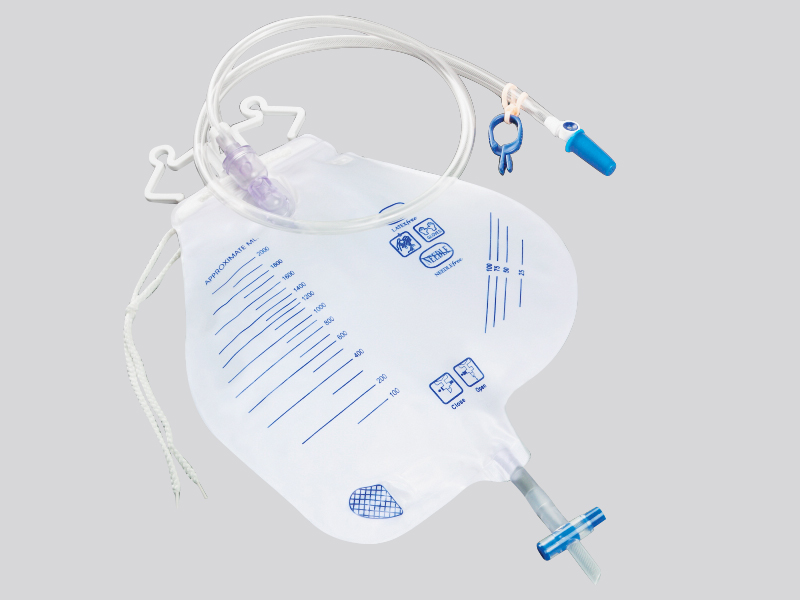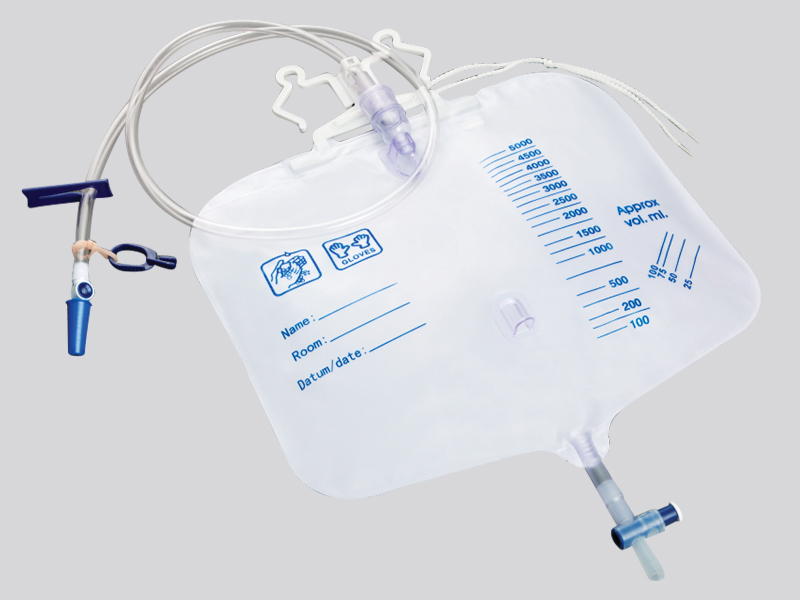The current position:Home > Information dynamic
> Industry Trends
Why do many hospitals use disposable gastrointestinal nutrition infusion tubes
source:www.cnboyi.net | Release time:2025年09月16日1、 Preventing cross infection from the root and ensuring patient safety (core reason)
Gastrointestinal nutrition infusion tubing needs to directly or indirectly contact the patient's digestive tract (such as through nasogastric feeding tubes or fistula tubes), which belongs to "semi invasive" medical consumables. If reused, it is highly likely to cause cross infection or worsen the patient's own infection. Disposable use can avoid this risk from the source:
Avoiding pathogen transmission between different patients: Even after cleaning and disinfection, reusable pipelines may still contain residual bacteria (such as E. coli, Klebsiella pneumoniae), viruses (such as norovirus), or fungi, especially for immunocompromised patients (such as postoperative, critically ill, and elderly patients). Once exposed to residual pathogens, it may cause serious complications such as gastrointestinal infections and pneumonia. Disposable pipeline "one person, one use, one discard", cutting off the cross infection path.
Preventing the aggravation of self infection in patients: In gastrointestinal nutrition support, if the tubing is repeatedly used, poor cleaning may lead to the growth of bacteria in the lumen (such as "catheter-related infections"), which can cause the patient's own reflux esophagitis, aspiration pneumonia, intestinal infections, etc. Disposable use can avoid the risk of such "endogenous infections".
Compliant with medical infection control standards: According to the requirements of the "Hospital Infection Management Measures" and "Technical Specifications for Disinfection of Medical Institutions", infusion consumables that come into indirect contact with patient mucous membranes and body fluids should be given priority in selecting disposable products; For high-risk populations such as immunocompromised and critically ill patients, disposable tubing is a mandatory or recommended standard consumable that can help hospitals meet infection prevention and control compliance requirements.
2、 Simplify clinical procedures and improve treatment efficiency
In hospital gastrointestinal nutrition support scenarios (such as ICU, gastroenterology, and postoperative surgery), medical staff have a heavy workload and fast operating pace. The design and logic of disposable tubing can greatly simplify the process and reduce the burden on medical staff
No need for complex cleaning and disinfection processes: Reusable pipelines need to go through multiple steps such as "disassembly flushing enzyme washing disinfection drying sterilization", which not only takes time (a single treatment may take more than 30 minutes), but also requires professional equipment (such as high-pressure sterilization pots) and personnel. Disposable pipelines can be directly connected and used after unpacking, and treated as medical waste after use, saving a lot of time and cost, allowing medical staff to focus more on patient condition monitoring and treatment.
Reduce the risk of operational errors: Disposable pipelines are mostly designed as "pre assembled" (such as connected infusion connectors, drip buckets, and filters), which do not require temporary splicing by medical personnel and can reduce problems such as leakage and blockage caused by improper pipeline assembly; At the same time, some disposable pipelines come with scales, anti slip joints, and other details to further improve operational accuracy.
Adapting to bulk clinical needs: Hospitals may require dozens of patients to receive gastrointestinal nutrition infusions simultaneously in a single day (such as in postoperative wards). Disposable tubing can be stocked in advance according to the number of patients, and can be used and taken as needed, without worrying about the "turnover shortage" of reusable tubing, ensuring timely treatment.
3、 Ensure stable pipeline performance and reduce the occurrence of medical malfunctions
Gastrointestinal nutrition infusion has strict requirements for the "sealing, patency, and corrosion resistance" of the tubing. Disposable tubing can better maintain stable performance during production and use, avoiding treatment interruption or decreased effectiveness caused by tubing problems:
Strict sterilization and uniform performance before leaving the factory: Disposable pipelines need to be sterilized with ethylene oxide (EO) or irradiated to achieve a "sterile state" at the time of leaving the factory, and each batch of products needs to pass sealing and pressure resistance tests (such as no leakage under 0.3MPa pressure) to ensure that there will be no contamination or leakage of nutrient solution due to pipeline damage during use.
Avoiding performance degradation caused by repeated use: Repeatedly used tubing may experience aging (such as thinning of the tubing wall, decreased elasticity), blockage (residual nutrient solution scabbing in the lumen), loose joints, and other issues due to repeated cleaning and disinfection. This may lead to unstable nutrient solution infusion speed (such as sudden bloating and diarrhea), and even tubing rupture, resulting in interrupted treatment. The disposable tubing is in a "brand new state" throughout the entire process, with stable performance, ensuring a continuous and smooth infusion process.
Adapting to the characteristics of different nutritional supplements: There are various types of gastrointestinal nutritional supplements (such as suspensions, emulsions, and essential vegetarian diets), and some formulations (such as high viscosity suspensions) may have requirements for pipeline materials (such as resistance to adsorption and resistance to wall adhesion). Disposable tubing is often made of medical grade PVC, PE, or silicone materials, designed for different formulation characteristics (such as low adsorption tube walls and large-diameter tube lumens), which can reduce formulation residue and blockage, ensuring smooth delivery of nutrients.
4、 Adapt to individual differences of patients and meet diverse treatment needs
The gastrointestinal nutrition support plan (such as infusion route, dosage, and speed) varies among different patients, and the "multi specification, customized" design of disposable tubing can correctly meet these needs:
Adapt to different infusion routes: For different routes such as nasogastric feeding (via nasogastric tube), gastrostomy (PEG tube), and jejunostomy (PEJ tube), disposable tubing has corresponding connector specifications (such as spiral connectors, straight connectors) and lengths (such as nasal feeding short tube, fistula long tube) to ensure correct connection with the patient's existing catheter and avoid leakage or detachment.
Meeting the needs of different infusion modes: Gastrointestinal nutrition infusion includes "intermittent infusion" (such as 3-4 times a day, 30 minutes each time), "continuous infusion" (24-hour constant infusion), and disposable tubing can be matched with corresponding equipment (such as regular infusion tubing for intermittent use or tubing with flow rate regulators for continuous use). Some tubing also comes with filters (to filter out impurities and particles in the nutrient solution) to avoid blockage of the tubing or damage to the patient's digestive tract.
Suitable for special patient groups: For special populations such as infants and critically ill patients, disposable tubing has a "miniaturized" design (such as small-diameter silicone tubing for infants and young children, and anti reflux tubing for critically ill patients), which can reduce damage to the patient's digestive tract mucosa and improve treatment tolerance.
5、 Reduce the long-term operating costs and risks of hospitals
In the long run, although the cost of a single disposable pipeline is higher than that of a reusable pipeline, it can avoid the hidden costs and risks caused by reuse, and is more in line with the operational logic of hospitals
Reduce additional medical expenses caused by infection: If a patient is infected due to repeated tubing, additional investment in antibiotic treatment, extended hospital stay, and increased nursing costs (such as infection monitoring and wound care) are required, which are much higher than the cost of disposable tubing; Disposable tubing can reduce the incidence of infection and indirectly reduce additional medical expenses for hospitals.
Avoiding the risk of medical disputes: Infections caused by poor disinfection of repeated pipelines may lead to medical disputes (such as patient complaints and lawsuits), which not only affect the hospital's reputation but also require compensation costs. Disposable tubing has clear "usage records" (such as production date, sterilization batch number), which can be used as a medical safety traceability basis to reduce the risk of disputes.
Reduce equipment maintenance costs: Reusable pipelines require supporting cleaning and disinfection equipment (such as cleaning machines, sterilization pots), which have high procurement, maintenance, and depreciation costs. Disposable pipelines do not require such investment, which can reduce the equipment operation burden of hospitals.
Prev:
What is the function of disposable precision mete…
Next:
Where is the non-woven fabric used for disposable…

 Cn
Cn En
En WeChat ID:
WeChat ID:







 Contact us
Contact us
 Add WeChat
Add WeChat
 Telephone
Telephone